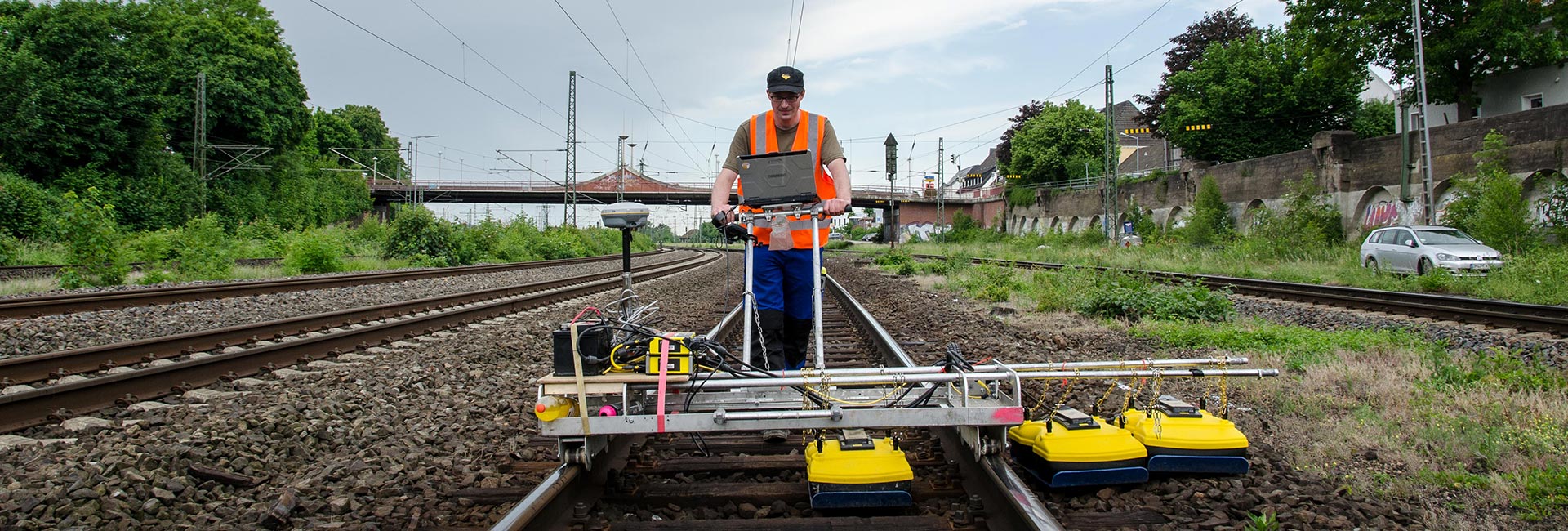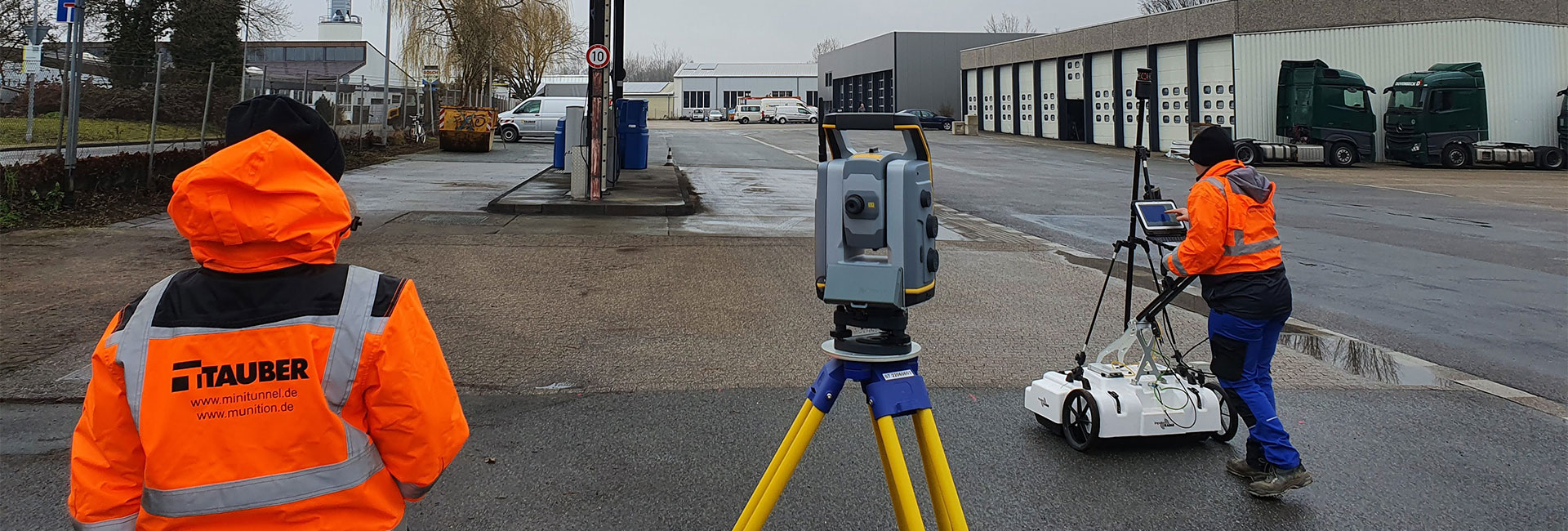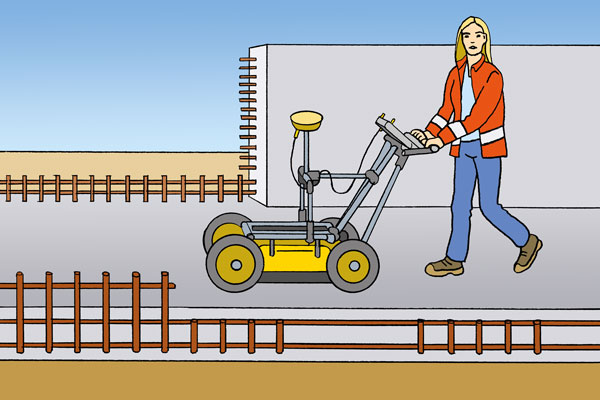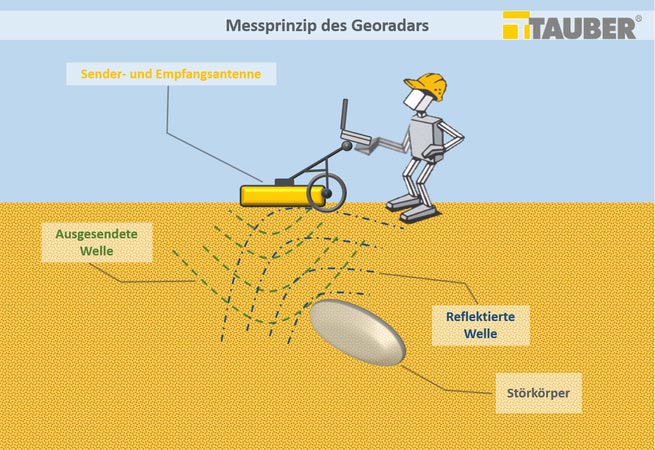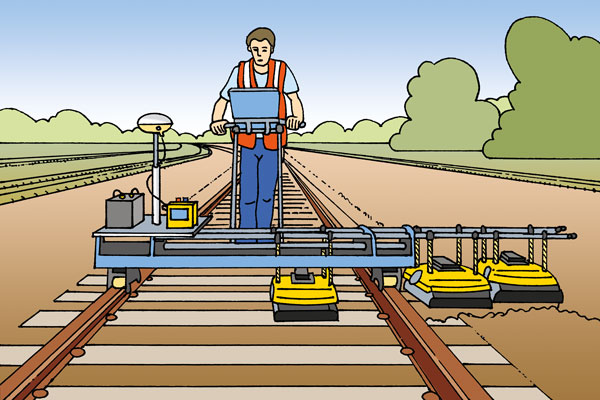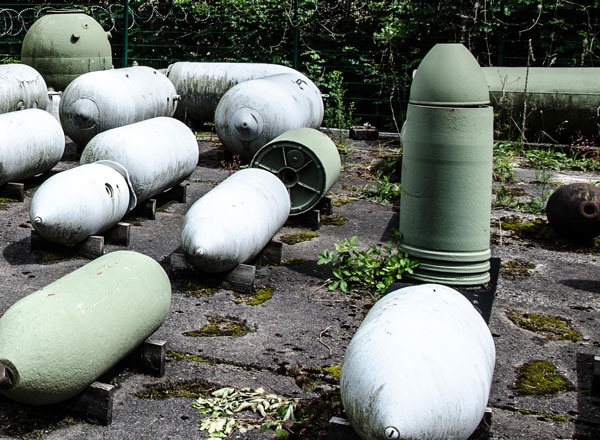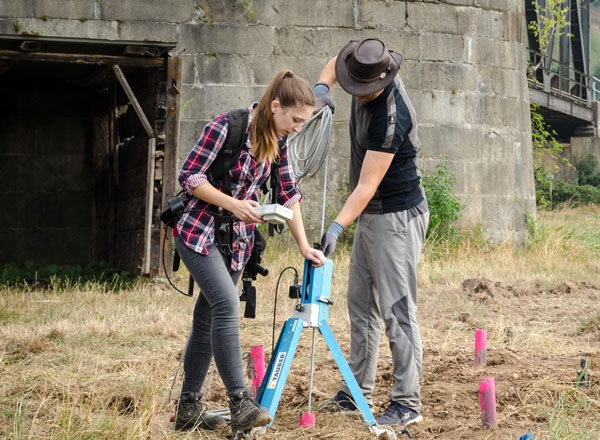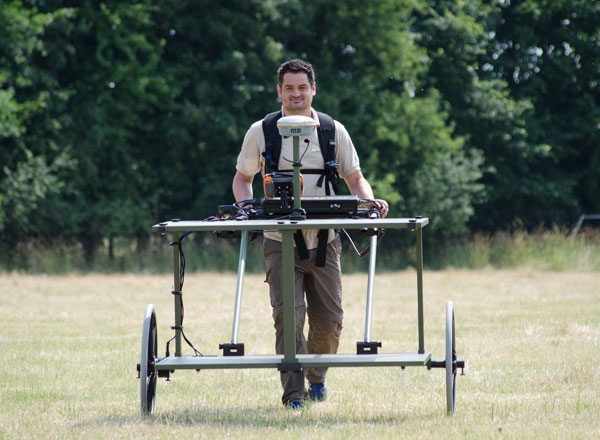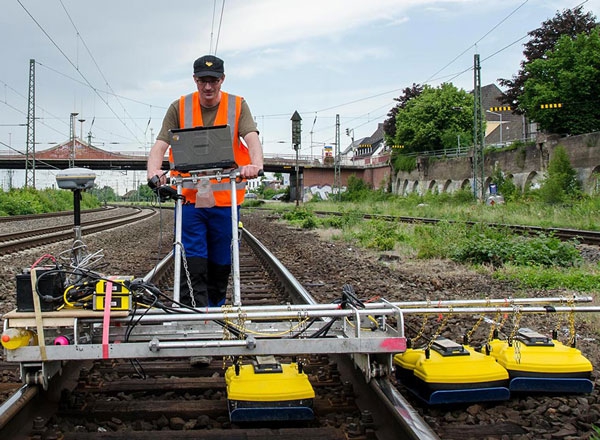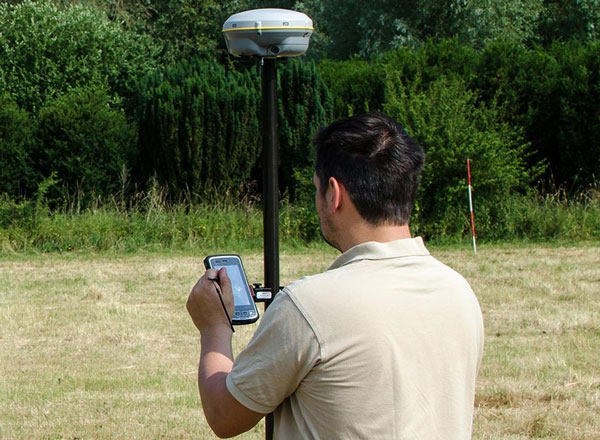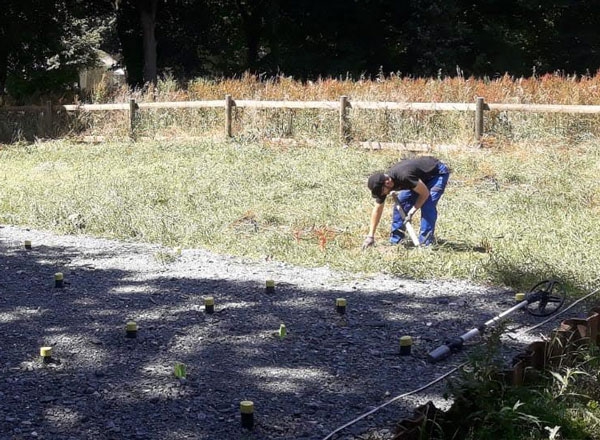Ground-penetrating radarGround-penetrating radar
Geophysics
Ground-penetrating radar
Various environmental factors, such as tracks, pipes or foundations, often make it difficult or impossible to detect weapons. In these situations, TAUBER experts rely on ground-penetrating radar, or GPR. Since non-metallic obstructions can also be detected with this method, it is also used for other purposes such as, for example, locating pipes.
Measuring principle
GPR is an active geophysical process. It works like sonar: a transmitting antenna emits electromagnetic waves into the subsoil, which diffuse in the ground. When a wave hits an obstruction or a change in the subsoil, it is reflected. A receiving antenna registers the reflected waves.
By using shielded antennas, the diffusion of the waves can be focused in one direction. GPR measurements are therefore also possible directly next to obstructions, such as train tracks.
The depth of penetration of GPR depends on the geological conditions and the selected measurement frequencies. This process is therefore very suitable for dry and sandy subsoils. Where the ground is very good, it can detect up to a depth of five meters. For many other types of ground, penetration depths of two to three meters are usually still possible.
For special tasks, the geophysicists at TAUBER also use borehole GPR, borehole tomography or a special 3D radar. Due to its special antenna geometries and a very large data density, the latter is especially suitable for the differentiation of structures. For this reason, in addition to the search for ordnance, it is also ideal for locating pipes or old masonry.
The applied technology
TAUBER experts use GPR in the frequency range from 100 to 1000 MHz. The antennas are both single-frequency and dual-frequency measuring systems.
The following measurements are possible for the TAUBER group:
- Surface GPR
- Borehole GPR
- Borehole tomography
